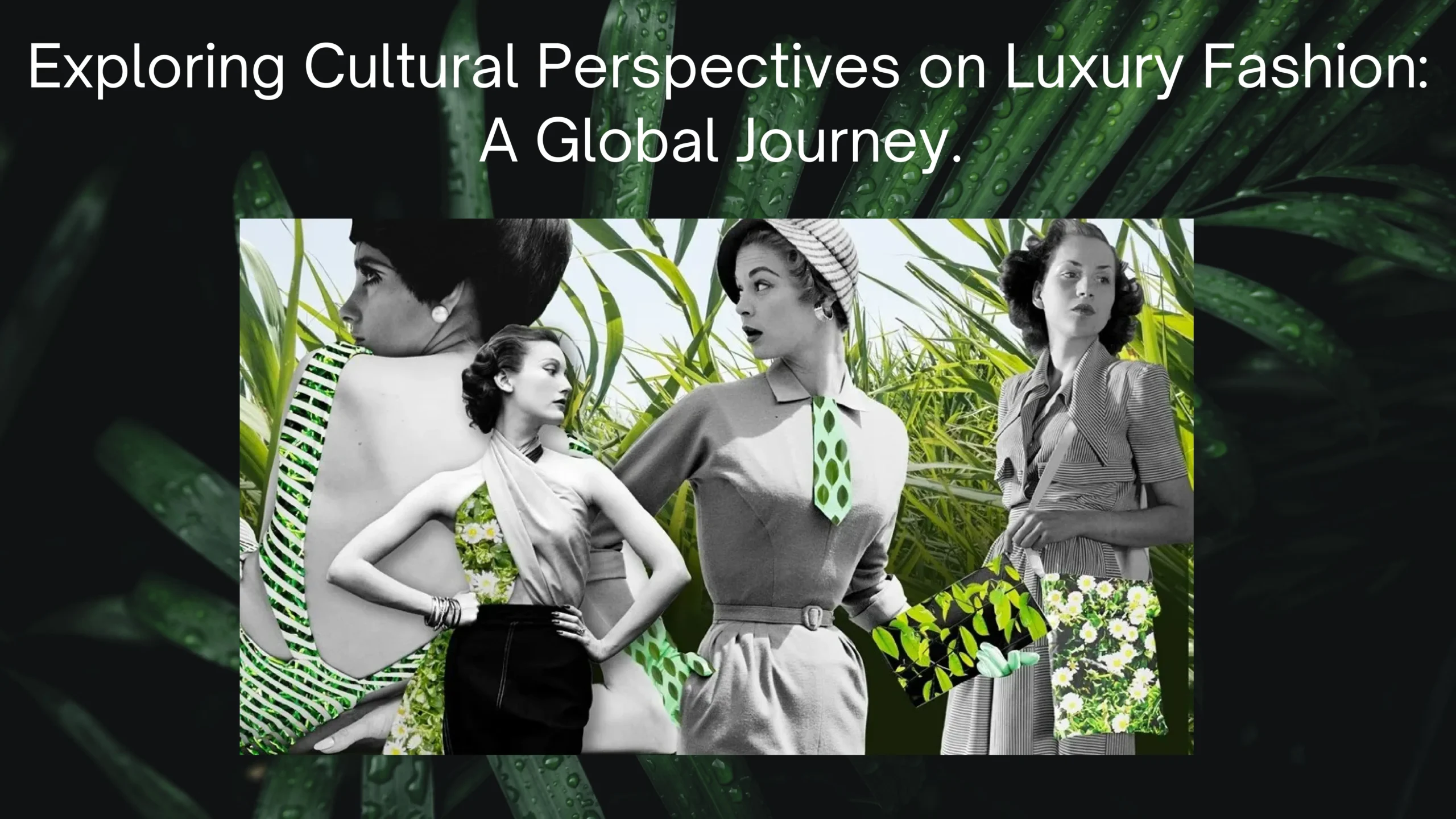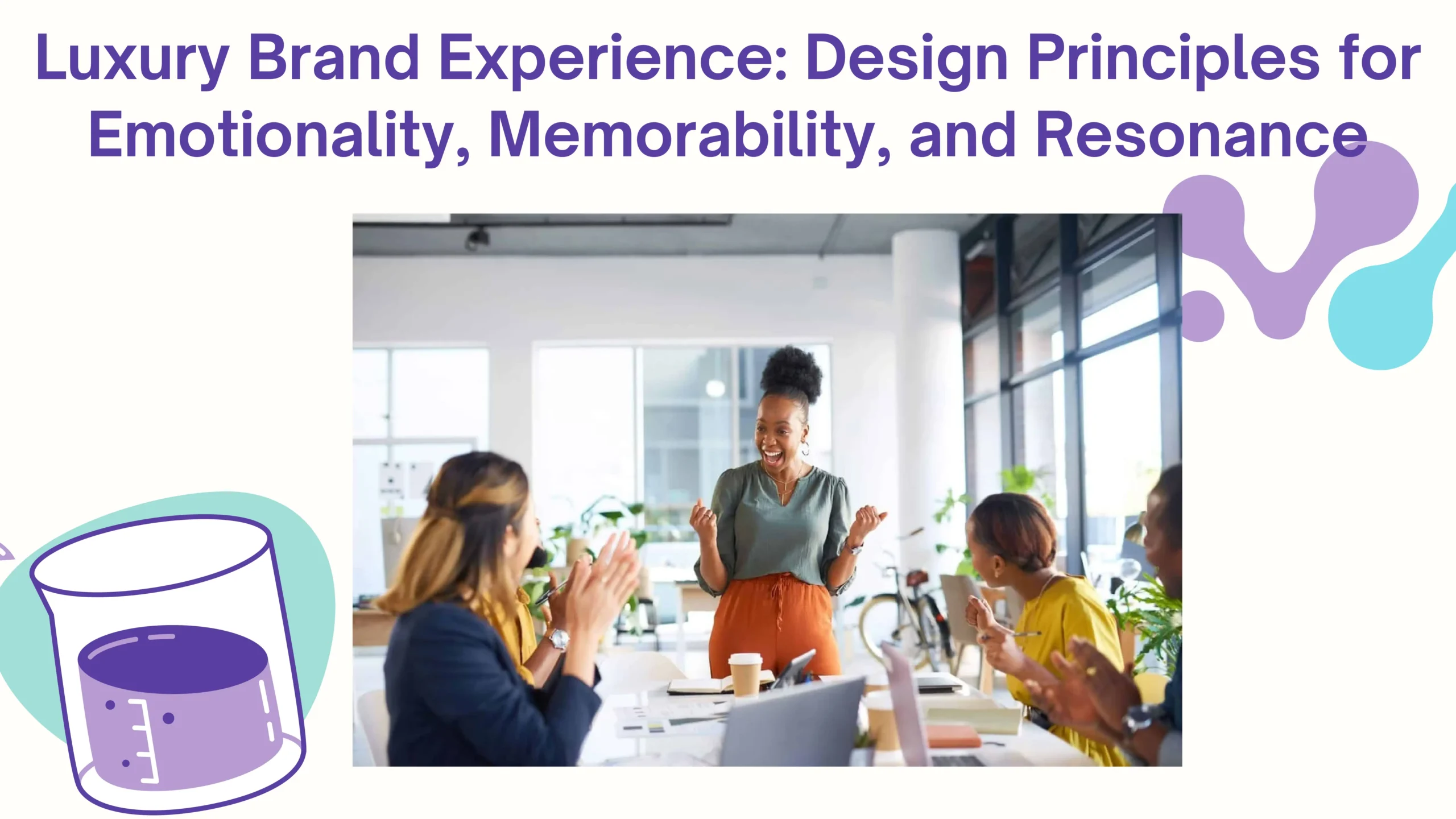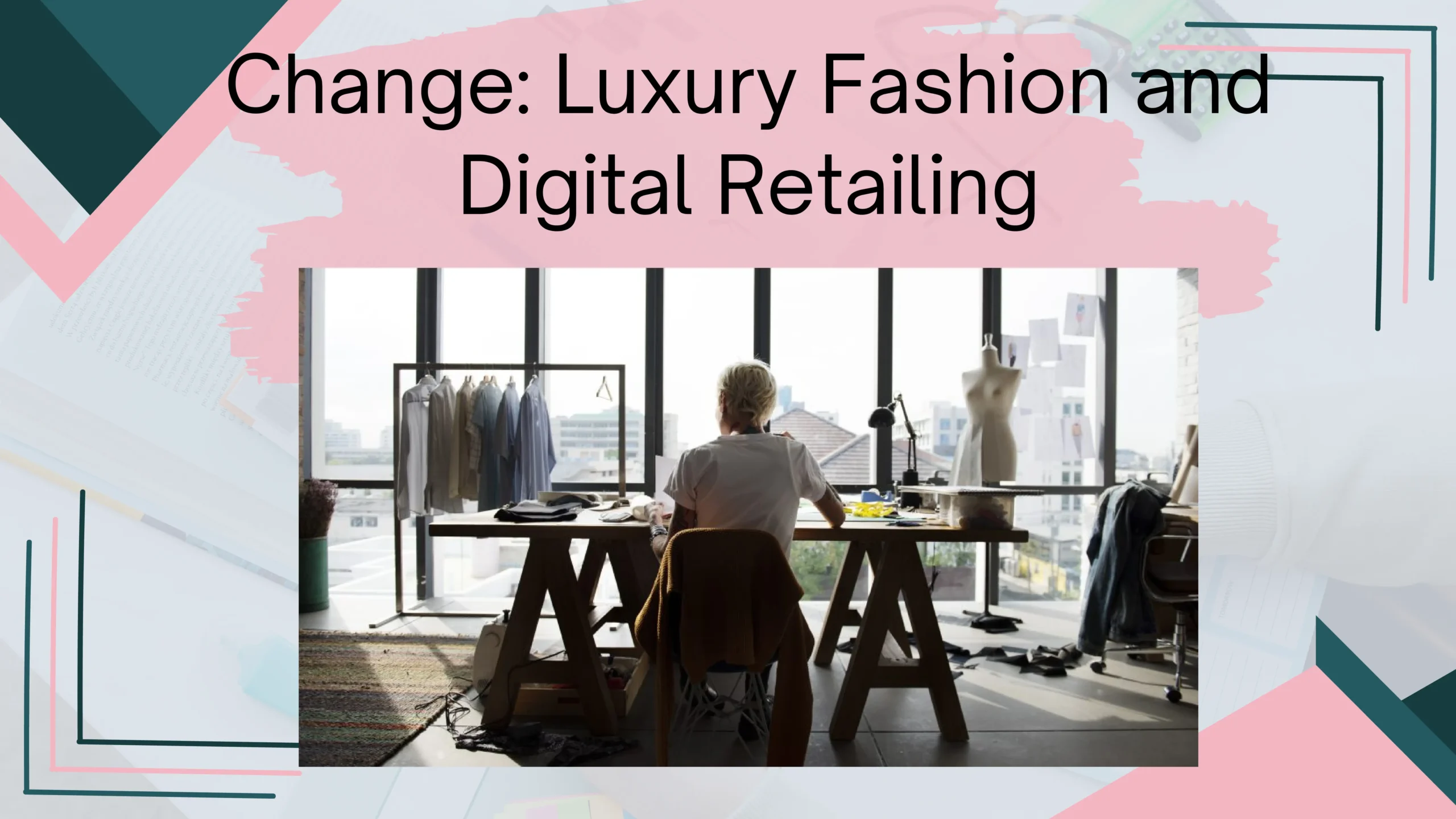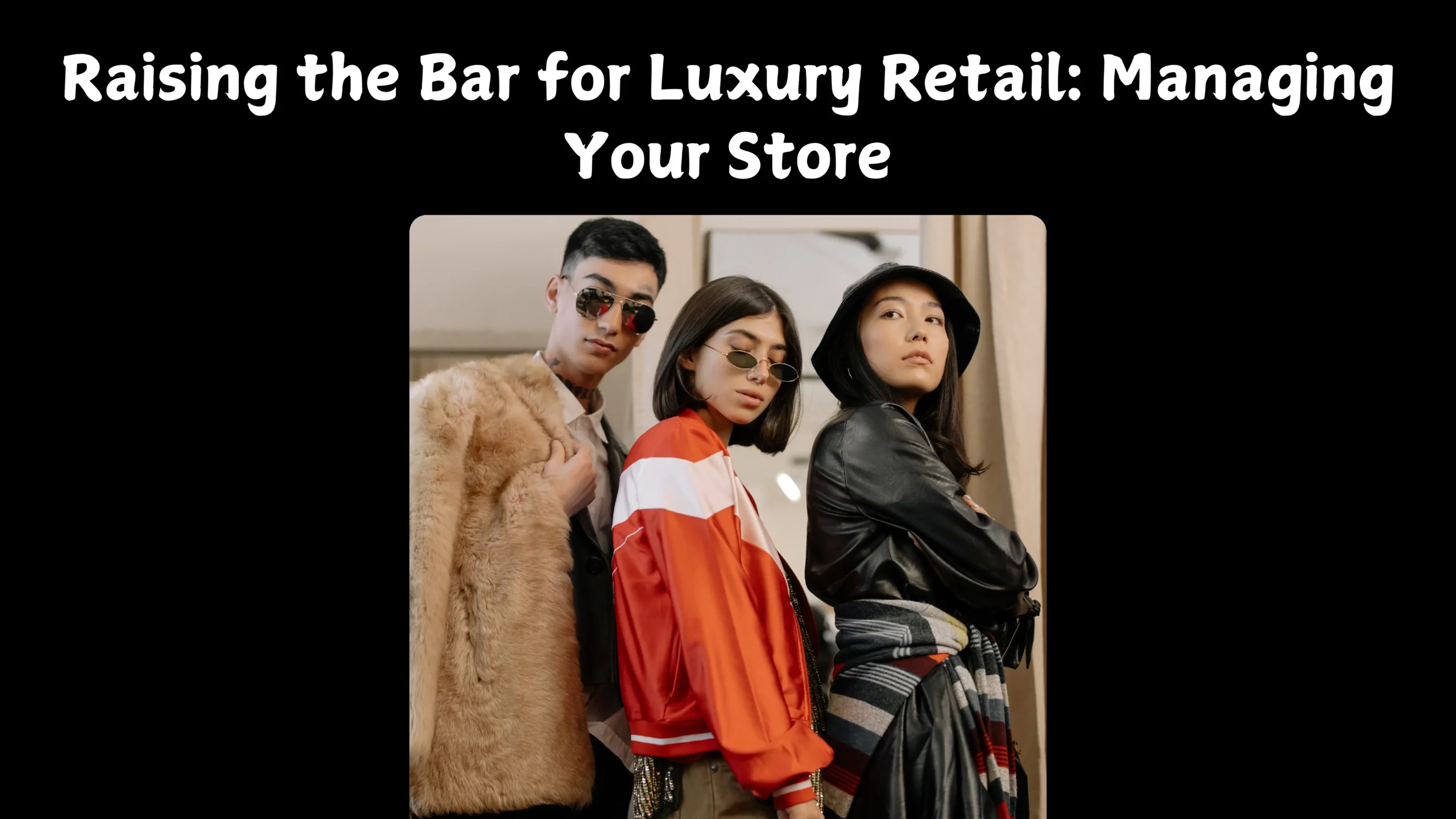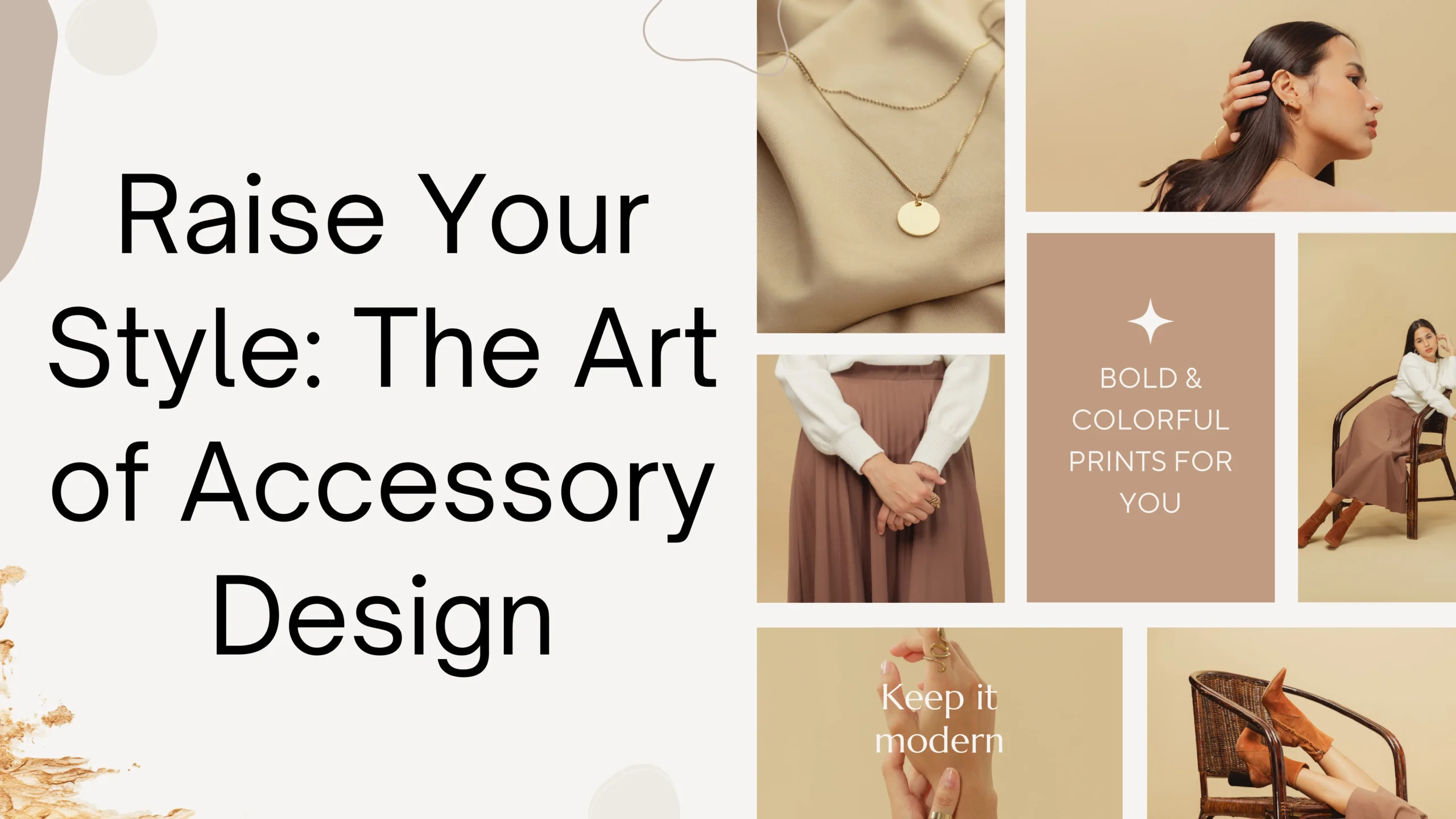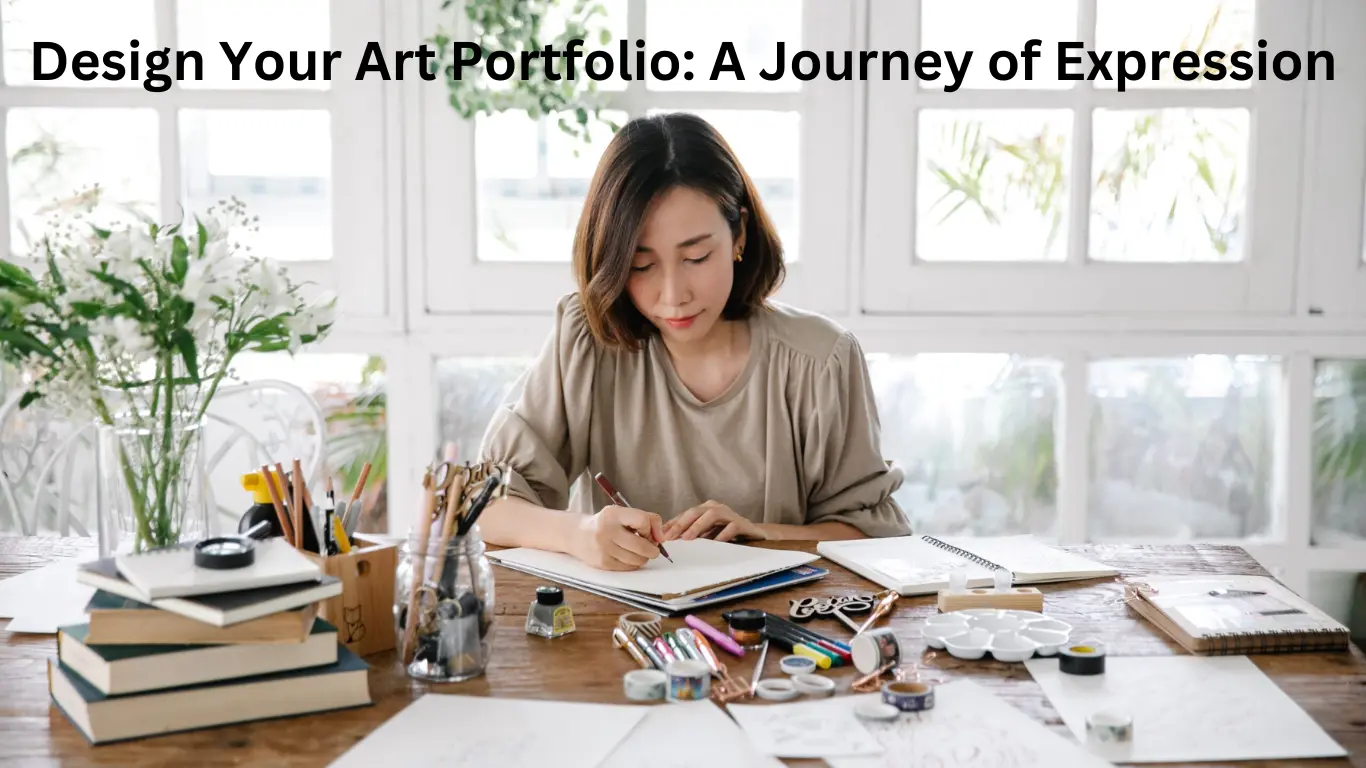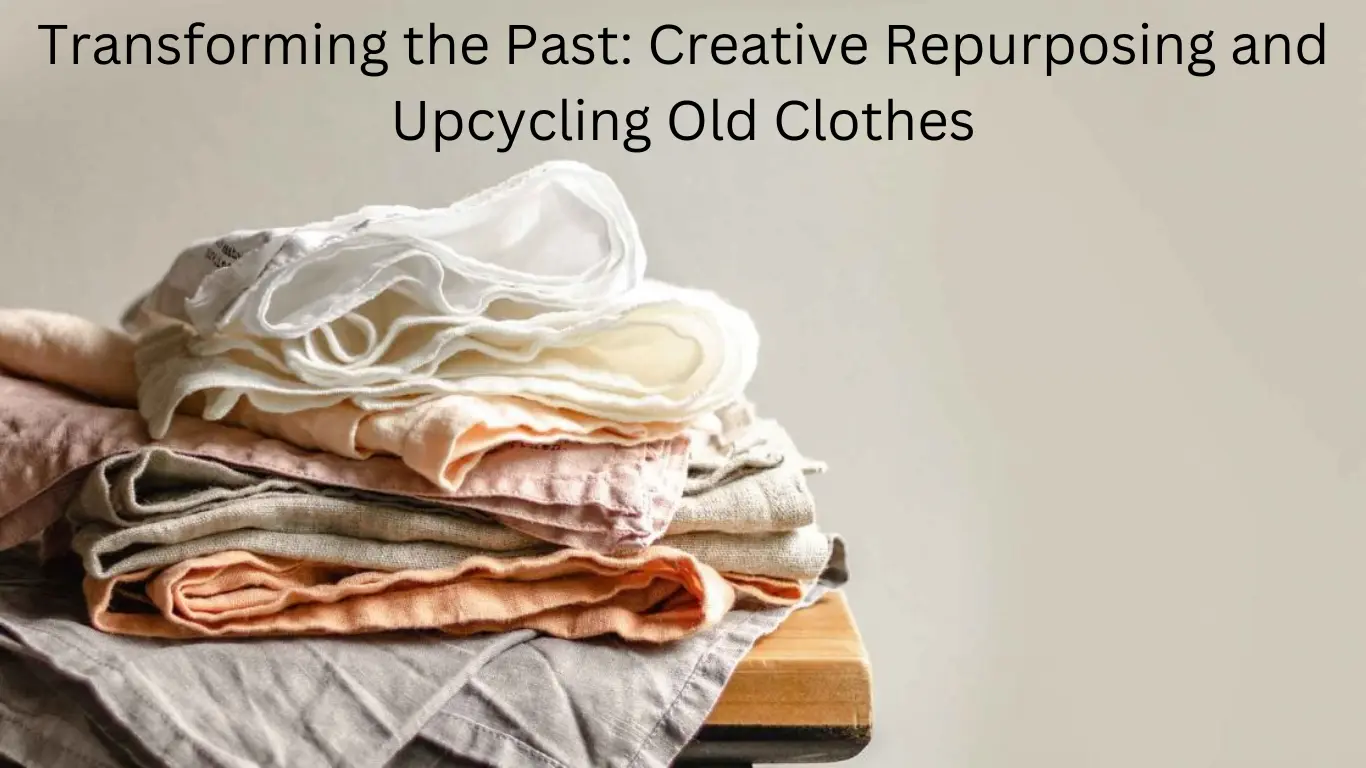Exploring Cultural Perspectives on Luxury Fashion: A Global Journey. When one mentions luxury fashion, what generally comes to mind? For many, it is the appeal of high-end brands, the latest trends at the catwalk, and the shimmering fabrics that raise an outfit from an ordinary sort to a showstopper. However, few realize that the perception of luxury varies significantly across different cultures. These subtleties should be in the knowledge of any individual entering the fashion world, most especially those entering into the profession of costume designing and students of fashion design in Chennai. Let us explore this journey together regarding how different cultures view and interact with luxury fashion and how those perceptions may influence strategies among brands around the world. The Nature of Luxury: More than Just Price Tags Consider entering a busy market in Chennai replete with the fragrance of spices and the colors of the textile industry. Luxuries here are not made solely by pricing but narrate the skills used, the richness attached to them, and the accompanying stories. Luxury, in many cultures, is an extension of personal and collective identities spanning centuries. Thus, for instance, the silk sarees with intricate hand-weaving have much cultural value in India. These sign so-called status, heritage through family, and even live events beyond consumerism. Luxury brands that are looking to enter such markets need to be able to understand and respect such cultural ties and modify their offerings so as to go hand in hand with the traditions that exist in those regions. Cultural Insights: The Way Every Society Regards Luxury Then, what is luxury? To most Western cultures, luxury translates to exclusivity and signs of brand recognition. For example, luxury houses like Chanel or Gucci-how just one logo would suffice to command status, prestige, as well as a fair amount of recognition. A culture which mostly features subtlety with quality, however, is Japanese culture, where the foundation of a piece becomes its craftsmanship and artistry. Take a minute to consider how you, based on your cultural experience, define luxury. Is it a term that brings to mind sophistication and heritage, or maybe something else? Understanding such cultural nuances also creates competitive advantage for many aspiring fashion designers and marketers. Bridging Cultures: Role of Global Brand Strategies How would brands traverse heterogeneity in perceptions of luxury? The challenge, therefore, lies in devising tactics that are flexible enough to be cognizant of the variance in cultural values but are still aligned with the integrity of the brand. For instance, a luxury brand would appeal to storytelling in its marketing campaign and highlight the artisans behind the handiwork of the product, people who esteem craftsmanship highly. In addition, what role has technology played here? A brand could use social media to expand into almost every corner of the globe, but their message will have to be adapted according to local sensibilities. One good campaign in India may focus on community and family values, while another successful one in Europe is on individual expression and creativity. The Authenticity Challenge: Is It Being Omitted by Brands? In times when consumers want authenticity, how do luxury brands ensure it stays authentic while expanding globally? Well, collaboration and transparency is the way to go. Brands that ally with local artisans and communities not only enhance what is being offered but also trust the consumer. Reflective Experience: Can you recall a situation where you were drawn to a brand because of its sustainability, or social responsibility? With consumers seeking brands that reflect their individual values, cultural perspectives on luxury allow brands to connect with their audience more meaningfully. Future of Luxury Fashion: A Cultural Mosaic The future of luxury fashion will, with the passage of time, evolve from a tapestry of cultural interactions into which brands will seamlessly integrate themselves. Brands that make such an adjustment by being culturally sensitive and understanding will not only thrive in emerging markets but also make relationships that last a long time after. What do you think about the future of luxury fashion-is it a doorway into globalization or a re emphasis on heritage? The discussion on luxury fashion is ongoing, and your voice as a would-be designer or industry worker will be instrumental in determining its direction.
Luxury Brand Experience: Design Principles for Emotionality, Memorability, and Resonance
Luxury Brand Experience: Design Principles for Emotionality, Memorability, and Resonance In luxury brands, experiences are as good as the product itself. A lot of luxury consumers look for beautiful things that not only speak to them but to their aspirations and lifestyle. As a new costume designer or fashion student in Chennai, this can make all the difference in a highly competitive world. So, let’s dive into some techniques that can help develop one-of-a-kind, memorable luxury brand experiences. What Makes a Luxury Brand Experience Unique? Historically relative, of course, luxury has always been exclusive, rare, and priceless. So what makes luxury brand experiences truly remarkable? Compared with the quality of the product or the price tag applied, it is storytelling that finally stirs up emotions among the consuming public on an individual level. For example: Luxury brand extensions are now more iconic than Louis Vuitton or Chanel bags and fragrances. They sell a whole way of life, after all. It is built through stories that make customers feel connected, valued, and part of something bigger. You envision walking into an upscale boutique where everything, from lighting to music, has been designed to create a serene atmosphere. And the staff members? They don’t merely greet you; they entertain you in meaningful conversations, tell stories about the collections, and make recommendations that appear almost as if they’re made solely for you. Such attention to detail provides a unique experience that stays long after you’ve left the store. How Can Storytelling Elevate Brand Experience? Storytelling is a potent tool for luxury brands. It’s not marketing, however; it’s an enabling factor of emotional connections. If you talk to consumers about the craftsmanship behind a product or the inspiration behind its design, you’re creating a holistic experience that invites them into that story. For example, imagine a luxury watch company that emphasizes the workmanship and effort channeled into every single individual timepiece. By detailing how a watch is created-from the sourcing of rare materials to the skilled artisans involved-the customer will come to appreciate or even admire that specific item. What a customer is paying for is a small bit of history and artistry rather than just buying a simple time piece. Integrate the stories into your brand experience by looking at the things that resonate with the target audience. What do they value? What experiences are treasured? Use this understanding to evolve narratives that make one feel and create more of a consumer connection. What is the role of personalization in luxury experiences? Personalization is the most critical parameter while developing luxury brand experiences. The new consumers have an expectation from the perspective of personalized experience. From personal emails to geared-up recommendations of products, personalization makes the customer feel visible. For instance, consider how a high-end fashion retailer can utilize consumer data to generate exclusive invitationals based on past purchases. You could receive an invitation to an up-scale fashion show where you will see designs that match your preferences. That attention ensures the feeling of being special and creates loyalty toward a brand. Engage personalization in your brand strategy by gathering insights into who you are aiming at. Use surveys, feedback forms, and interactions with social media to find out what they want. Use such information to guide decision-making in shaping experiences that really resonate across every single individual. How Do Brands Create Community and Connection Luxe luxury brands have long term relationships with the customers. Luxury consumers often desire to connect with likeminded people having similar interests and values. Hence, such platforms can be created through event organizing or online forums or social networking groups that augment the overall brand experience. For example, take an event like that of Gucci, which brings together style enthusiasts and influencers for a glimpse of their new collection. Unquestionably, such an event not only showcases new collections to fashion enthusiasts but also provides a connection avenue between people attending such events. It is this sense of community that instills brand values in customers and fosters loyalty towards brands. Build community through ideas that create engagement spaces both online and offline. Organize workshops, webinars, or social media campaigns to build interaction and connectivity within your audience. Creating a brand with the community experience built into it adds layers to your overall experience and allows people to see themselves within it. What’s in the Future for Luxury Brand Experiences? The only way to truly stay ahead in this ever-evolving luxury market is by being more conscious of trends. Future luxury experiences are mostly sustainable, digitally innovative, and focused on experiential marketing. Consumers continually look for brands that share their values, such as environmental responsibility and fair and ethical practices. Look at integrating sustainability into your brand experience. This might be from sources that are produced or manufactured ethically, reducing waste in the production process, or maybe even supporting local artisans. Embracing sustainability will help appeal to the conscious consumer and offer a positive brand image. Digital Innovation is the other trend shaping the future of luxury brand experiences. Virtual reality shopping experience to augmented reality fitting rooms, technology plays a massive role in enhancing customer engagement. Learn how you can harness these technologies to create immersive experiences that set up to connect with the tech-savvy consumer . Conclusion: Creating Luxury Experiences Actually, creating memorable and distinct luxury brand experiences calls for in-depth knowledge of the target audience and dedication to storytelling, personalization, community, and innovation. By focusing on these techniques, brands will be able to create brand experiences that will resonate with top consumers and really connect with them over time. Whether costume design or for a student of fashion, to be able to understand and create these experiences greatly can lead to a very fulfilling career. Start embracing some of these strategies and you will be well on your way to making a difference in the high fashion world.
Change: Luxury Fashion and Digital Retailing
Change: Luxury Fashion and Digital Retailing Technology shapes our daily lives. As an industry, luxury fashion is in a marvelous change process. The day when the concept of a virtual showroom or personal shopping was just a trend is gone; it is a watershed shift that each aspiring designer and industry professional has to absorb. If you are an aspiring costume designer or are a fashion design student, or you are part of the film and television industry, this journey into the digital world will expose to you what you can do to navigate the new landscape of luxury fashion. The Digital Revolution: What’s Changing in Luxury Fashion? E-Commerce Boom Imagine walking into a luxurious boutique filled with exclusive designs, but now, you can do it from the comfort of your own home. Perhaps the lifeline for luxury brands today would be e-commerce, especially in times as difficult as the global pandemic. From recent studies, online sales in the luxury segment surged significantly, with matching growth in direct-to-consumer channels for most of these brands. This kind of shift opens greater avenues and creates unique experiences in an online space that resonates well with a modern consumer. Therefore, while fashion stylist courses in Chennai or textile design courses in Chennai are under consideration, ponder over how to prepare yourself for this newly digital environment. You learn about designing principles, the essence of having a virtual presence, and brand storytelling. With growing e-commerce, all aspiring fashion professionals need to know about the scheme of digital marketing strategies, engagement on social media, and user experience. Personalization in the Digital Age In the luxury market, personalization has really mattered. Brands are using data analytics and artificial intelligence to personalize experiences for their customers. Imagine going on a luxury fashion site and, upon arrival, your past purchases and preferences are recognized, and items pop up suggested in your trademark taste. This kind of personalization allows a deeper connection between the brand and the consumer, enhances customer loyalty, and calls for repeat purchase. Learning about personalization, therefore, opens those doors to innovative design concepts for you as future designers and stylists. How will you create pieces that resonate with individual consumers yet embody luxury brand ethos? Understanding consumer behavior, trends, and data analytics is key, and your education will give you the foundation to make informed design choices that appeal to a digital audience. What Strategies Will You Use for Online Success? Develop an Appropriate Online Platform To succeed in the digital luxury market, brands must have engaging online platforms that draw you to a story. Consider the visual storytelling elements that will make a brand distinctive. Pictures of great quality, engaging narratives, and immersive videos can take customers into a world created by the brand. As an aspirant costume designer or fashion student, think how you can input your creativity into these digital narratives. Textile design courses could also learn the materials and craftsmanship, hence you can represent your designs with a storytelling approach in its consumption to highlight luxury and exclusivity about your product. Whether you’re making fashion for the label or working in film, an understanding of visual storytelling will enhance your ability to market work effectively. Leasing and Leveraging Social Media Social media has been a tool that assists luxury brands in connecting better with their clients. Sites such as Instagram and TikTok not only showcase the products but also allow communities to be founded based on brand values and aesthetics. As a future industry professional, you should be capable of leveraging those platforms to develop your personal brand. Engage with your followers, show them behind-the-scenes looks at your design process, and join the relevant conversations. What can you do on social media to make it stand out? Maybe through content about educating your audience on luxury products and how they were crafted, design tips, or being sustainable in fashion. This kind of engagement creates trust and cements you as an authoritative voice within your industry. What is the Future of Luxury Fashion? Sustainability and Ethical Practices Sustainability can become one of the most important issues within the development of luxury brands in digital retailing. Today, customers are aware of the environmental impact of their purchases and therefore demand more ethics in it. The next generation of designers has to think of the way he contributes to sustainability within the luxury industry. Courses in the ethics of fashion will teach you how to make choices that not only beautify your designs but also lay the foundation for a more sustainable industry. One can envision creating beautiful garments not only aesthetically appealing, but also to work with eco-friendly materials. This walk between creativity and responsibility is the future of luxury fashion. Embracing Technological Innovations The digital landscape is constantly updating; it has newfound emerging technologies like augmented reality and virtual reality, even changing how consumers interact with fashion. Luxury brands have finally started accepting these innovations, offering digital try-ons and immersive shopping experiences that mimic the in-store feel. As a student in fashion design or costume design, keeping up with this will give you an edge on the market. Your education also should include learning traditional design techniques but an understanding of how technology can fuel creativity is beneficial. Consider how AR could be used to visualize your designs in different settings or how you might use digital platforms in order to collaborate with other creatives. Conclusion: Your Role in the Digital Luxury Revolution Remember that the digital transformation of luxury fashion is one unprecedented in history to offer flexibility and new opportunities in creativity and innovation. Position yourself as a leader while embracing e-commerce, personalization, and technological advancement. Be it the courses in fashion styling in Chennai or courses in textile designing in Chennai, this will be the all-important tool in success
Raising the Bar for Luxury Retail: Managing Your Store
Raising the Bar for Luxury Retail: Managing Your Store Running a high-end retail store involves not just objects-it is also the memory of the experience of your customers. If you are an aspiring costume designer, fashion design student, or film and television industry worker, understanding how to manage a luxury retail store can add a lot to your skills. Here, we will discuss some of the main strategies for improving customer experiences while still meeting business objectives:. The Art of Building an Ambiance Imagine going into a luxury store. You just feel that glamor around you. Everything is supplied with just the right amount of light; the fragrance in the air presents an irresistible scent, and every display is perfect, well-placed, and effectively handled. As a store manager, you are almost an artist who stitches such a sensory experience. The Environment to Your Advantage To achieve this, focus on the ambiance. Soft lights will make the space warm, and you can use scents which convey sophistication. Perhaps use a hint of sandalwood or a fresh floral note. Periodically change your displays to keep fresh and to be in step with seasonal themes. You may think about holding exclusive events to interact with your customers; these might include private nights of shopping or styling workshops that find an echo for your target audience’s aspirations. Work On Personalization Personalization can take what would be simply an unexciting shopping trip into an extraordinary one. Educate your employees to identify repeat customers and their preferences. If the shopper is greeted by name as he enters, it provides a relationship beyond just any transaction. That small knowledge of his favorite color or style may create a loyal customer waiting to come back. Know Your Target Audience Knowing how to understand your audience’s needs and desires plays a very crucial role in the luxury market. Everyone has differences, and these may guide the strategies carried out in your store. Study and Gather Leverage customer data into the discovery of trends of preference and purchasing behavior. Conduct surveys or feedback sessions with them to know what customers love and could do better. Such information can help you alter product lines and marketing approaches to meet their expectations better. Emotional Identification and Adaptation If the customers give feedback on the basis of which changes have to be adjusted to the strategies, it simply highlights that the opinion of the customer will hold value. An environment should be developed wherein a customer feels heard and valued. Thus, if several clients express their interest in using eco-friendly materials, sustainable fashion options can be incorporated into your offerings. Because, in the luxury retailing world, it is always seen that the listening brand holds well-being as a thriving brand. Training the Staff for Excellence The backbone that makes a luxury retail company a success is the employees. Their knowledge and attitude determine the direct experience of the customer. Employees should be trained Consider enrolling your employees for courses in the Chennai fashion stylist training where they can improve their styling techniques as well as product information. An informed workforce will give customers just what they want; the information they need and guidance in purchase decisions. Regular customer service-related training will enable your workforce to share pleasant experiences with customers, and they will leave with smiles. Promote Team Spirit Help Your Teams Create a Supportive Work Environment To make sure your team is motivated and engaged, you want to start with a supportive work environment. There’s no better way to feel it than seeing it when employees are happy, which reflects into the way they make contact with customers. Arrange team-building events and encourage open communication. When people work in a cohesive unit, they can better attack the challenges that come their way and provide consistent service excellence. What Role Does Technology Play? Technology can really add to the luxury retail experience. By bringing innovative tools into your operation, you can make life easier for everyone involved and give better service. Use Point-of-Sale Technology Invest in an advanced point of sale system to make the transactions smoother. Features such as CRM integrations can, for instance, record the preferences of the customers and their history, creating an experience as personalized as possible. E-commerce embrace Luxury brands today must have an online footprint. Consider this: one gorgeous, intuitive website very much like the in-store experience. Implement online appointment-making for personal shopping experiences that allow clients to enjoy a personalized service from the comfort of their own living rooms. Measuring Success Success will not be only measured in terms of sales but rather as performance against customer satisfaction as well as brand reputation. Set Clear Goals Designate specific business goals, including the regained percentage of customers or the increase in average transaction values. Use KPIs to track the progress. Monitor customer comments as well as sales performance while ensuring proper timely changes in strategies. Reward Successes Don’t forget to celebrate those small victories. Acknowledge the efforts of your team, no matter how small, for this will not only raise morale but also develop a success culture in itself. Seeing that effort put is tangible, helping them push toward excellence.
Designing Dreams: Product Development Process for Luxury Brands.
Designing Dreams: Product Development Process for Luxury Brands. Imagine a world of stitching, fabric, and design that tells a story, but luxury is not just a brand but an experience. Being a fashion design student who aspires to be a costume designer or worker in the film and television industry can enable you to create pieces that speak of elegance and innovation in understanding the nuance of the product design and development process in the luxury sector. Let’s take this fascinating journey: innovation and marketability must be always intertwined. What makes luxury product design unique? Luxury product design goes beyond aesthetic appeal. Its core is indeed the method of creating an emotional connection by using a clear understanding of the target audience through which luxury brands end up creating products that not only are visually beautiful but also speak of the desires and ambitions of the people purchasing them. This interplay between brand and consumer, so complex and involved, is what separates the luxury good from the mass-market one. Luxury handbag: sublime leather, elaborate detail on all that makes it-it speaks of the detail in the stitch and the color palette. Everything is “equipped” to assure exclusivity and sophistication. And yet for you aspiring designers, your journey here has only just begun-to see that luxury is as much about the story behind the product as it is about what you lay your eyes on when you actually look at it. Why Innovation Plays an Important Role in Luxury Product Design Luxury product design is the oxygen of innovation. Luxury brands exist in a world where choice can be unlimited, and hence there is a constant need to raise the creative bar. Do not forget how Gucci and Louis Vuitton have transformed their lines over time. Luxury brands are embracing cutting-edge technologies, sustainable resources, and new art collaborations to remain current. Think about how sustainability now makes the difference in today’s fashion world. High-end brands can no longer innovate only within the design but also concerning the production process. That is how you are going to benefit more from fashion stylist courses in Chennai and even more so with some textile design courses in Chennai. You will learn how to put in new materials and sustainability in designing so they meet the expectations of the new luxury consumer. How Do You Approach Marketability in Luxury? Sometimes, marketability in luxury doesn’t just mean selling a product; it refers to issues of laying up a brand legacy. For one to understand what the target market would be, he or she must understand their lifestyle and interests. Market research, in turn, assists in trends and preferences being evident enough for devising corresponding designs. For example, when working with a blockbuster movie to create a collection, one needs to consider the various personalities of the characters, the themes in the movie, and how that garment is intrinsic to the storyline. That costume not only becomes appealing but also demonstrates your prowess as a designer if it involves luxury because it embodies the essence of luxury. What are the stages involved in the product design and development process? Concept Development: Let your imagination run wild at this stage. Brainstorm for ideas, sketch designs, and develop your vision for the product. Be inventive in approaching the type of materials and techniques that will best present your concept. Prototype Development: Having come up with a concrete concept, the creative process now continues on to the making of prototypes. Testing and refinement are the major reasons for prototype production. Visualization of the final product can quite easily be achieved by coming up with prototypes, and thus adjustments can be made as well. Testing and Feedback: Seek peer, mentor, and consumer feedback. This might help you to understand how others view your design and what needs to change. Final Production: The last step for many is final production when your idea has been fed back. At last, your vision becomes reality. Perhaps, you should get some work done by accomplished artisans to really bring your designs to life with precision and care. Marketing and Launch: Last but not least, develop a marketing plan that highlights those characteristics which can make your product special. Think about what you can do to create excitement for your launch – maybe through social media, exclusive events, or partnering with some organizations. What’s the key to keeping you inspired in this design journey? The world of luxury fashion is changing constantly; therefore, inspiration is most important. Read about art, culture, and history of fashion. You can visit exhibitions; follow influential designers; and attend networking events available in fashion stylist courses and textile design courses in Chennai. Like-minded persons inspire you and give you the chance to connect with others whom you may collaborate with. Maintain a design journal where you can scribble down ideas, inspirations, and reflections you find along the way. This will be invaluable while navigating the complexities of product development and design within this luxurious market. Conclusion: Your Journey Awaits As you embark on your fashion design career, you will realize that the product design and development process for luxury brands is not so different from weaving together creativity, innovation, and market acumen into one very beautiful tapestry. You can be a part of this exciting industry and really make your mark in the world of luxury fashion by focusing on learning, being willing to learn, and so as to draw skill from your courses.
Elevating Brand Awareness: Your Guide to Successful Marketing and Communication Plans
Elevating Brand Awareness: Your Guide to Successful Marketing and Communication Plans In an era where creativity and competition are on an all-time high, the voice of your brand has never been more important. For the budding costume designer; the fashion design student, and filmmakers and television industry workers, how you develop successful marketing and communication plans can be the point of differentiation in the luxury fashion market. Whether it is your personal brand or launching a new collection, you will realize that proper marketing principles shine through. Let’s dive in and explain some strategies in detail, which will really help strengthen your brand presence. Why Brand Awareness Is Important for Fashion Imagine going into a crowded room. Suddenly, everyone in the room focuses his attention on you. That is the power of brand recognition! In fashion, particularly high-end fashion, it can make the difference. Brands are picked and shopped because consumers know and trust them. The construction of such an identifiable brand is not only important-it is necessary. Brand awareness is the foundation of your marketing. Prospective customers who recognize your brand will engage in some manner, whether it’s through social media, visiting your website, or making a purchase. So, how do you create this all-important recognition? Building Your Brand Identity You can’t market effectively without a clear and compelling brand identity. That’s where your story begins. What Makes Your Brand Unique? Reflect on what makes you unique-from your design philosophy to the materials you work with, and perhaps even the philosophy you have around sustainable fashion. Now that you have identified and structured your USP, you will be able to clearly communicate the DNA of your brand. It’s not a backstory but a story that is speaking to the people, man. Developing Your Visual Language From there, translate that essence of your brand into a visual language that reflects your values. Your logo, color palette, and typography must reflect the personality of your brand. For instance, if your designs are fabulous and playful, use bold colors and whimsical fonts. If, however, your style is minimal, then you must go for something more subdued color palette with clean lines. Marketing Strategies That Work As your brand identity is now on the line, you can now strategize your next step. Here are some actionable tips that can change and improve your marketing strategy: Put it to Social Media Best friend, of course, social media is in the fashion industry. It’s where you present your designs to your audience and create a community. Instagram and Pinterest are visually driven, so an ideal place for fashion marketing. Post good quality images of designs and sneak peeks behind the scenes, and good styling tips too. How do you engage your audience on social media? Engage Interactions through Surveys, Q&A sessions and user-generated content. Inspire your followers to share how they style your pieces by giving them a reason to engage with your brand. Collaborate with Influencers Remember that you can team up with fashion influencers who are aligned with your brand values. Influencers have the ability to showcase their message to extensive audiences. They can increase the credibility of your brand; therefore, collaborate with people whose aesthetics speak to yours for an authentic partnership. What do you look for in an influencer? Ensure the influencers like your designs. The excitement they bring to the table will translate to the content, making your collaboration seem more authentic than transactional. Connective Communication Plans Effective communication will ensure that your marketing message gets delivered well to the audience. Here’s how you could do it: Define Your Key Messages So what do you want your audience to understand about your brand? Whether it’s commitment to sustainability, or workmanship in the tailoring of designs, these key messages must shine through clearly on all platforms, building trust and reinforcing recognition. Through Right Channels Not all communication channels are created equal. Depending on your target audience, some platforms will be more effective than others. For example, if you are targeting a younger age group, then the medium of TikTok may well be apt. To network professionally, LinkedIn might be the most apt one. How can you decide which channels to use? Do your research on your target audience demographics. Knowing where they spend most of their online time will enable you to better strategy and tailor your communication. Monitoring and Adjusting Your Strategy Once all your marketing and communication plans are in place, it becomes important to track their effectiveness on a regular basis. Analytics tools to monitor engagement rates, audience demographics, and campaign performance. What if your strategy does not work? Do not be afraid to pivot. If one particular strategy is not giving some traction, look at the data, solicit feedback, and be willing to change your course. The fashion industry is constantly changing and therefore should be your strategies. Conclusion: Building the Journey Forward Building a strong brand presence is a journey. Knowing the significance of branding awareness and being effective in marketing and communicating is going to take your brand to a luxurious level within the fashion industry, not selling but telling a story that really resonates with your target audience. So, let’s go for those fashion stylist courses in Chennai or textile design courses in Chennai to hone those skills and take the first steps toward building your brand today.
Raise Your Style: The Art of Accessory Design
Raise Your Style: The Art of Accessory Design A costume designer or fashion design student in Chennai may dream of bringing this concept to fruition, and in the realm of fashion, something more concrete is required to translate the value of clothing as a statement of self-expression of identity as well as art. What stands at the fore of this equation are accessorizing, or those finishing touches that elevate an otherwise unremarkable outfit into the sublime. Here, we explore ideas for accessory design in greater detail-getting into the nitty-gritty of how to achieve pieces that enhance and complement fashion garments. What Makes an Accessory Stand Out? Imagine: you are getting ready for a special occasion. Your outfit is just so, perhaps a sleek black dress or a well-tailored suit. But when you go to get dressed, something’s off. That is, unless the perfect accessories are in place, your look just won’t wow. Accessories-whether a statement necklace, elegant handbag, or chic hat-can make the outfit. They call the attention of others, balance is provided, and your sense of personal style is also shown. So, what are the basic principles that define an accessory as outstanding? Scale and proportion refer to the size in comparison to the garment you wear. In other words, an accessory has to complement the size of your outfit. It can balance out a bold, voluminous dress with a huge earring or statement belt. Or if the wardrobe is very subdued, delicate pieces will do the trick. Such a balance can create harmony in your look and bring out not only your outfit but your accessories together. Color and texture are also at play: use contrast or coordination in choosing your accessory. If you are wearing a monochromatic clothing match, add a bold pop of color to create dramatic visual interest. Texture is also great at playing the contrast game, matching the softness of silk with the edginess of leather for that chic feel, whereas contrast takes another important role when matched with contrasting textures, such as leather and cotton for a crisp, modern look. How Do You Create Accessories That Match Fashion? Well, knowing the basics, let’s consider some of the techniques to design accessories that will really support your fashion garments. The best place to start is just to research recent trends and pick up on some inspiration of old. After all, the art of fashion is cyclical. One should be inspired by past eras to discover what could work. Now, imagine a ‘vintage’ market where each accessory has its own story, like a pair of vintage earrings that would provide the perfect idea for a contemporary collection; in uniting modern aesthetics with vintage charm, the resultant pieces can become unique and attuned to the consumer’s demand. Another important method is to sketch and prototype. Feel free to test ideas. Begin, as mentioned above, with rough sketches of accessory designs working within the bounds of shape and functionality. Carry from that to prototyping using various materials. If you’re thinking about a fabric purse, try out a few different fabrics to see how they drape, and how they hold their shape. Sometimes the result can be surprising and delightful. What Materials Should One Consider for Accessory Design? Materials will make or break your accessory designs when starting in accessory design. Of the materials that you’ll be looking into, consider these: Leather: Sophisticated look and feel; adds a premium value to bags, belts, and shoes. Select one that is sourced ethically for the purpose. Conscious consumers would appreciate it. Metals: Some pieces of jewelry can be tempered with gold and silver, leaving them with a refined elegance. Finish the metals in multiple ways-matte, polished, or hammered-and you have different effects to play with. Fabric: Fabrics can be the most creative. Where you have a choice between silk, canvas, or literally any other fabric available, the right fabric can transform a whole design. Drape, texture, and how they relate to your garments could mean complementing or contrasting. It is very important for you, on your journey through the world of fashion design, to learn how to combine the materials together for an ideal answer. An accessory not only makes an outfit but also can be a standalone to make a statement. How to Promote Accessories? Once you’ve designed your accessories, you can now take them to market. Brand presence is a must. First step is to tell your story. Share the inspiration, the process, or unique elements going into your creations. That connection can be what sticks customers to loyalty. Show your designs on social media platforms like Instagram and Pinterest. More and more publicity will be generated by images of your accessories in all aspects of life. Network and collaborate with fashion influencers that can carry your work to a larger audience. Furthermore, you can engage your community, for instance, through events or even markets. You can participate in local fashion shows in order to get reachable customers while at the same time get feasible opinions on the designs.
Mastering Apparel Quality Management: Techniques for Success
Mastering Apparel Quality Management: Techniques for Success Apparel quality management is very vital in the fast-paced world of fashion and can make the difference between getting a product right or not – from design to delivery. Being one of the most competitive industries, an aspiring costume designer or student of fashion design in Chennai needs to master advanced techniques in managing apparel quality. In this guide, I run you through the production cycle, revealing all sorts of lessons and strategies that will lead you to excellent results. The Foundation: Defining Apparel Quality By apparel quality, one could mean many things: that the fabric itself wears well, that the stitching is accurate, that the garment fits properly. Imagine all those hours of work on that lovely costume design and then it falls apart after a few wears—that hurts doesn’t it? Then, you can ensure that your designs are not only beautiful but also lasting in case you keep an eye on the quality management from the beginning. I consider it my favorite garment. What really made that piece a staple in my closet? Is it the luxurious feel of the fabric, the perfect stitching, or the way that holds its shape that makes it? Each element contributes to your experience and satisfaction. This is important as you move through the design, production, and delivery of the stages. Design: The Art of Planning for Quality How Do I Design for Quality? Designing for quality, surprisingly actually begins at the selection of the right material and understanding of the properties of that material. Fabrics range in their durability, drape and texture, and your choice will be determining your final product. For example, making a costume for an historical film; making the right fabric choice can really make the design authentic and look. Practicality also brings the quality quotient of your design up a notch or two. Think about seam placement, weight of fabric, finishing techniques. Do you require the added stability in the costume to be stable for movement? Are there places of embellishment that will weigh down and / or weaken the fabric? Bringing these questions into focus at the design stage allows you to address those concerns ahead of time, ensuring that what you see will translate into be of quality Production Quality Control What QC measures should I have in place? After design, comes production. Quality checks in this area would be of immense value. Correct checks at every stage of the production process mean you get to align every step of the way with your quality standards. For instance, pre-production fitting may raise issues which you can rectify before proceeding to mass production. Another excellent resource is standardized measurements and specifications. Develop clear and lengthy tech packs, complete with swatches, color codes, and construction details. Such a record will be available to manufacturers, and they can refer to it as a guideline, hence reducing the possibility of miscommunication or mistakes. Remember how proper preparation in preparation for the manufacturing process rules out the development of errors and ensures that the quality of your finished garment is enhanced. Delivery: Quality Assurance Finishing Touches What Measures Can I Take To Ensure Quality Is Maintained At Delivery? The journey of your apparel doesn’t end when it leaves the production facility. Quality assurance at delivery is just as important. Building a reliable inspection process is crucial in identifying defective items before your garment reaches its final destination. It should then be randomly sampled for inspections, and a general quality look can be made of the shipment. This should entail ensuring that the stitches are uniform, the colors all correct, and no terrible fabric imperfections exist. As previously stated, first impressions mean everything-especially in the clothing industry. A nicely packaged good with quality merchandise to match will go a long way in maintaining your brand image and customer satisfaction. How Does Sustainability Fit into Apparel Quality? No longer a trend, sustainability is today the path to quality in fashion. As you learn sophisticated ways of managing apparel quality do not forget to integrate sustainable practices. This can be achieved through the use of environmentally friendly materials or reducing wastage during production processes for their product among other strategies in ethical sourcing. Aligning your quality management practice to sustainability does not only contribute to a healthy planet but also taps into a growing market of those who are environmentally conscious. Imagine the pride of knowing that your designs are not only excellent in terms of quality but also supportive of sustainable practices. Conclusion: Your Road to Excellence in Apparel Quality In fact, managing clothing quality is a much bigger process. Quality commences from design till delivery; thus, if you manage this very process, then you can deliver clothes which will always be of exceptional quality and eternal. Quality management through such sophisticated techniques in the management process gives you an edge over others in the competitive world of fashion, letting your creativity and good craftsmanship speak for themselves.
Design Your Art Portfolio: A Journey of Expression
Design Your Art Portfolio: A Journey of Expression Creating an art portfolio is not just a job. It is a personal creative process, a journey of self-discovery that details one’s skills and style. Whether it is to be an aspiring costume designer, a fashion design student, or involved in the film and television industry, your portfolio is your visual story. It tells about your skills, style, and artistic vision that makes you stand out in a very competitive field. Let’s explore the art of conceiving and making an art portfolio, focusing on design principles and core artistic skills. What Is So Special about a Portfolio? Pretend you are going through a portfolio that resonates emotionally. You find yourself being drawn into each page as you enter a world full of creativity and passion. That is the kind of portfolio you would like to make. To make your work stand out, emphasize the following design principles: Cohesiveness and Consistency A cohesive portfolio tells one story. Pick a unifying theme, or a color palette, and let it do its thing in a representation of your artistry. For instance, if your designs are more vintage, let that vintage appeal take over in your layout, font use, and even the materials you use. Think of your portfolio as a book which each chapter flows into the next for that clean stream-of-consciousness feel. Quality Over Quantity It’s tempting to throw everything up but, remember, quality counts. Focus on presenting the best works you have-these would literally showcase your talents and creativity. Narrow it down to around 10 to 15 pieces that would depict a variety of your capabilities such as sketches and final designs and process work. That way, this selection isn’t only sketching your level of skill, but also a focused view of what style and vision you are working with. How to Proceed with Conceptualisation? Having a portfolio is intimidating, but breaking it down into these steps helps the process to become more manageable. Here is how to get started: Reflect on Your Artistic Journey So, before a line is drawn on the paper, with your pencil or your pen, before a needle strikes the fabric with the creation of stitches, take one minute to reflect. What inspires you? Which themes resonate for you? Think of the possibility of carrying around a journal of ideas, sketches, or even quotes which cross your path inspiring your creativity. This reflection phase will be the underpinning of your portfolio as you build a story that’s actually you. 2. Play Around with Different Formats Portfolio presentation doesn’t have to be identical for all individuals. Sometimes, you might prefer to have a digital portfolio using online platforms such as Behance or Adobe Portfolio. But then again, there are other cases in which you may only need a printed portfolio for an interview face-to-face. Test both options and settle for the one that best aligns with your own style and expectations of the targeted audience. Whichever you settle on, it’s meant to be user-friendly and aesthetic. What are Some Critical Design Principles to Keep in Mind? Remember some of these key design principles as you put together your portfolio. They will make it not only aesthetically appealing but also more impactful as work. Balance and Composition Balance is what makes a portfolio compelling. Organize your work with an eye for harmony. This can mean balancing a large image with one much smaller or reflective of a particular color change to add visual interest. Think about the flow of your portfolio – how does every piece lead to the other? A well-crafted portfolio leads the viewer’s eye around and around in a fluid way, from one work to another. Typography Matters A good typography may give a great deal of value to your portfolio. Select the right set of fonts that resonate in your design and carry it out with readability. However, avoid too many different fonts, which will create complete chaos in the field of vision. Rather, just stick with one or two typefaces that resonate within your overall aesthetic. In this capacity, detail adds to professionalism and your aesthetic sense. How Do You Effectively Portray Your Skills? Your portfolio is your stage for skills demonstration. The presentation makes all the difference. Here are some guidelines on effective work presentation: Include process work Process is as important as product. You can add sketches, mood boards or photos of your process. It’s more than just a documentation of the artistic journey, but also your thought process and problem-solving effort. The record of how you transformed from initial sketching to finished piece will give your work a lot more depth, especially in something like costume design. Tailor for Your Audience Remember, your audience defines your portfolio. If your audience is those who do work in film and television, keep your work how you understand your character and how your costume works. For courses targeting fashion styling in Chennai, keep concentrating on designs that epitomize the current trends of the season and what is happening around the local market, then. When is Your Portfolio Complete? Take a look at your final portfolio. Does it look like it’s complete? Does it represent who I am as an artist? Share the portfolio with mentors, peers, or instructors to get feedback. Constructive criticism can show you things you may not have thought of on your own. Remember, your portfolio is a living document—don’t be afraid to evolve and update it as your skills grow. Conclusion: Your Portfolio, Your Story This is actually how making an art portfolio inspires you, because it will be a reflection of how you, in due time, became the designer you are today. You are going to do some really creative highlighting of design principles, honing your artistic skills so that you can curate your best work, which would, in turn, craft a compelling story that resonates with your audience. Your portfolio is more than a display of
Transforming the Past: Creative Repurposing and Upcycling Old Clothes
Transforming the Past: Creative Repurposing and Upcycling Old Clothes Sustainability in the fashion world is about more than just a trend: it’s a movement that invites us to rethink our connection with clothes. As a future costume designer, you hold the key to revamping old garments into fresh, innovative creations. Now, for example, imagine going into work with lots of pieces of swatches and denim fabric from enormous heaps of discarded clothes, knowing you can breathe fresh life into these unwanted pieces. Join me as we look into different ways of upcycling and repurposing old clothing in alignment with the growing ethos of sustainability in the industry. Why Upcycling Matters: A Stitch in Time Saves the Planet Many people have never thought about fast fashion, which results in millions of tons of clothing being added to the world’s landfills each year, causing pollution and wastefulness. However, a costume designer has an edge here: he or she can fight this battle by upcycling, or treating old garments as new designs, making waste lessened and imagination and creativity heightened. Imagine this: you are in the closet scouring through your clothes when you stumble upon an old denim jacket whose collar is a little frayed. Instead of disposing of it, you may transform it into a cool cropped vest that features the fabrics that reflect you better. The whole process of rebirth of the fabric, coupled with being able to create something unique and special, gives it a new life. Such a costume design course in Chennai would help you learn the ways of upcycling fabrics, so while developing your skills, you are playing a part in making this world a much more sustainable fashion one. How Can I Take Old Clothes and Make Fashion Statements for Everything New? Let’s take a closer look at some hands-on ways you can reuse that old clothing. The list goes on and on, and your creativity is the only limit. Patchwork Wonders: Gather t-shirts, jeans, or any fabric scraps and create a patchwork masterpiece. Think of a bohemian-style skirt or perhaps a cozy quilt telling the story through its pieces of fabric. This not only gives life to lifeless furniture but also tells your story through design. Accessorize with Style: You could end up recycling a worn-out shirt to create an oversized tote bag. You could use fabric scraps to make hair accessories such as hair clips, headbands, and other beautiful pieces. Finally, add the accessories to the costumes; it will turn out to be a more complete costume representing not only your personality but also your distinctive taste in eco-friendly clothes. Dye and Design: Infuse new life into old or stained clothes by dyeing the method. Vegetable, fruits, and flowers-derived natural dyes can be amazingly beautiful yet eco-friendly. Fabulous fun of experimenting with tie-dyed or shibori; nothing could possibly turn out as it is before made, and every piece is a one-off, telling you in artistic ideas. What are some creative upcycling projects for costumes? A costume designer can portray the beauty concerning the characters he or she is portraying in his/her clothes. Here are some project ideas to get you going: Turn an old dress into a Cape; Any old, tattered dress and transform it into a majestic cape. Cut the dress into various pieces and attach a clasp or tie to it, so this might make for one spectacular appearance on a character who embodies strength and elegance. Convert all those too big high-waisted trousers into fashion-forward high-waisted shorts. You can finish the edges with lace trim or some fabric patches for that fresh, new take on the old garment. Perfect for a modern character. Upcycle Your Materials-Inspiring Accessories Make Costume Accessories: Take those upcycled scraps and turn them into really inventive accessories. From a great little piece of fabric necklace to wearing old ties in style as a trendy belt, anything can create visual interest for your costumes and add depth to your designs. How Will Upcycling Help My Career as a Costume Designer? In terms of environmental activism, upcycling is not only a responsible choice; it can be even a smart career decision for designers entering the profession. Getting labeled as a designer who makes such moves into his or her work distinguishes you in this competitive fashion industry. There has been an uprising trend among the employers of film and television pertaining to designers who nurture sustainable creativity. You will be portrayed as a fresh design best suited to handling the challenges that fashion embodies in modern times. Your portfolio can feature the before-and-after pictures, portraying your ability to repurpose and being an advocate for the environment. For example, upcycling can be described even as developing your skills. The more new techniques you discover, the sooner you will realize your confidence and how your personal style develops. Learning a course about fashion styling in Chennai can be a very amazing way to upgrade your knowledge and connect you with other like-minded people interested in sustainability in the world of fashion. Conclusion: Stitching a Sustainable Future Remember that on your design path to costumes, your imagination might just be the best friend to help you promote sustainability in fashion. Recycling and upcycling old clothing will give the healthy planet but also gives you designs no one else has. Challenge yourself with the old to become something new, just let your mind go wild. The Future of Fashion is in Your Hands: Every stitch weaves a more sustainable world.

